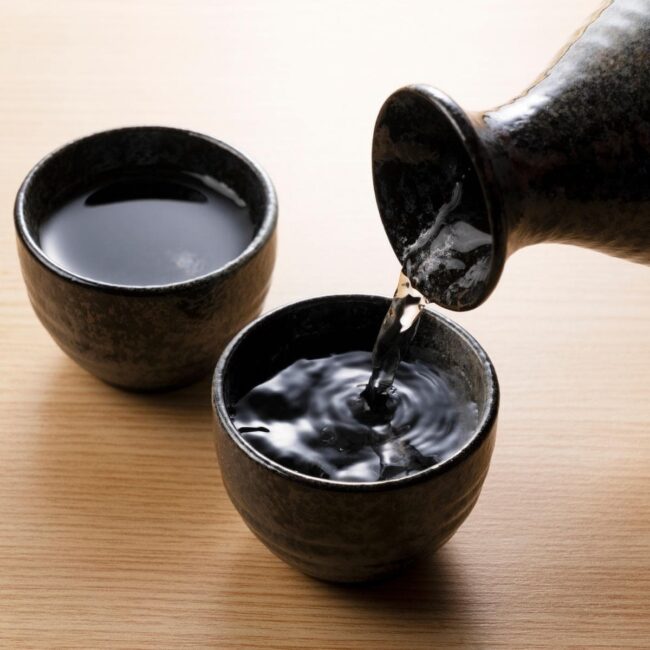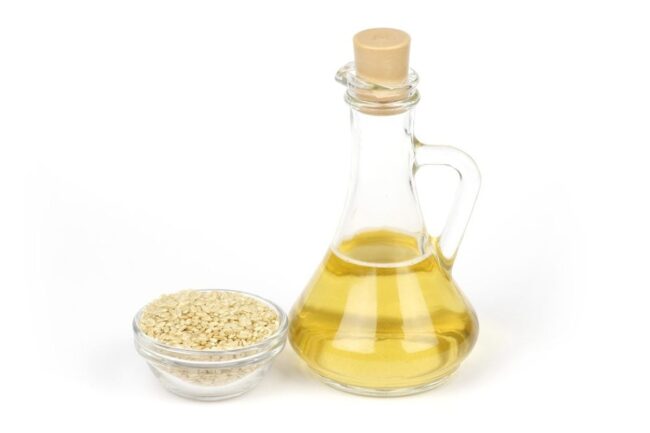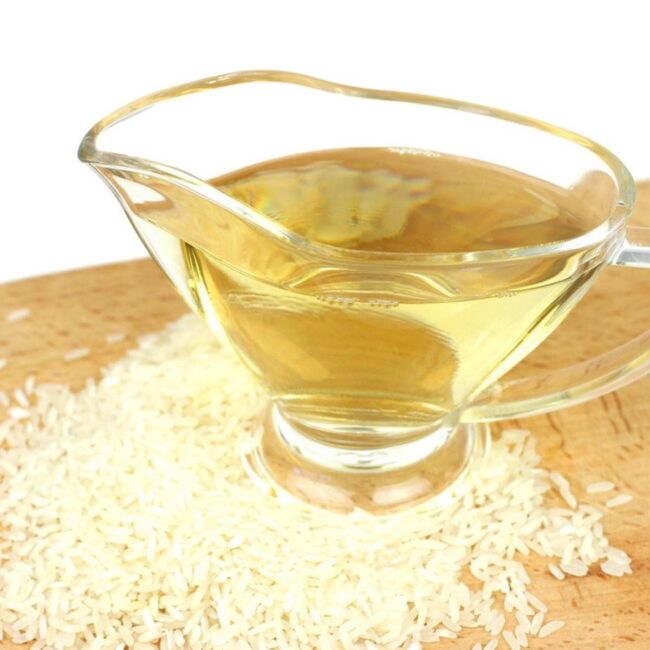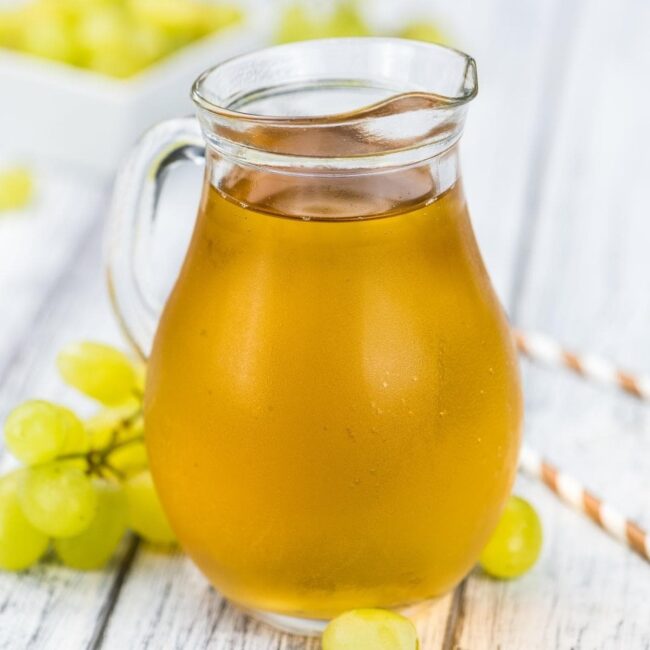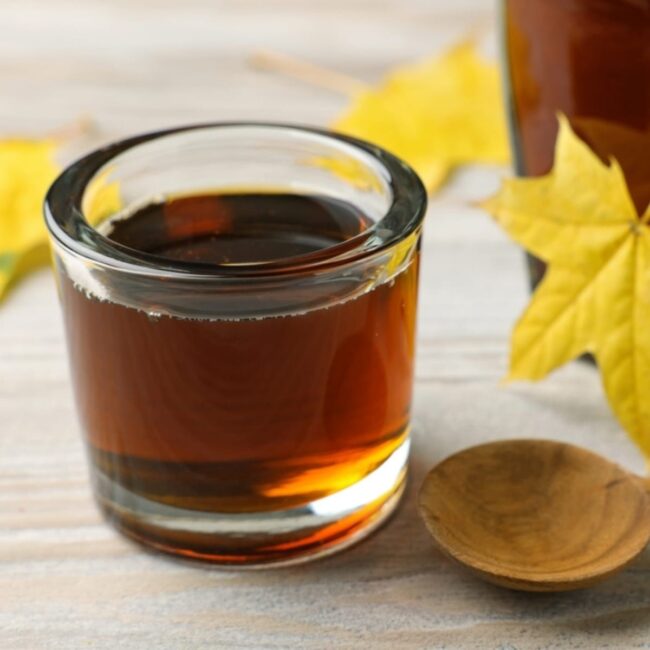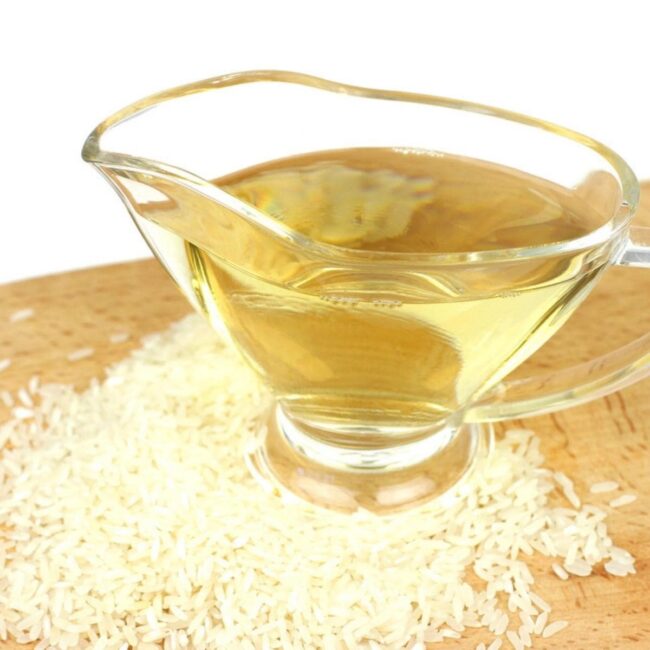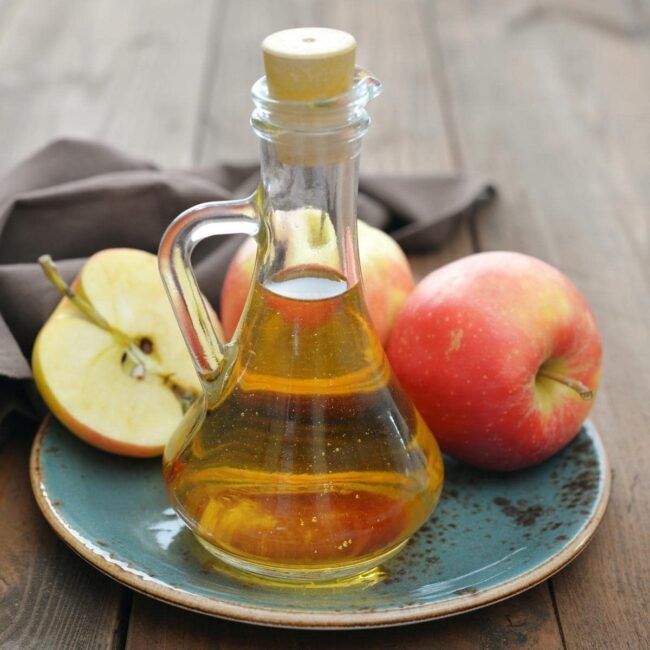11 Sweet Mirin Substitutes for Japanese-Inspired Dishes
Mirin substitutes provide the right balance of sweetness and acidity to enhance dishes. Some alternatives bring mild fruitiness, while others lean toward a deeper, caramel-like richness.
The best choice depends on how much sweetness or depth is needed in a recipe. Some options blend seamlessly into marinades, while others brighten up stir-fries.
A few alternatives create the same glossy glaze in sauces and dressings. If mirin is missing, these 11 tested substitutes will help maintain the perfect flavor balance:
What Is Mirin?
Mirin stands out as a vital component of Japanese cooking, known for its sweet and savory qualities. This rice wine is crafted by fermenting glutinous rice with koji mold and distilled liquor, resulting in a syrupy liquid that typically has an alcohol content between 10-14%.
Beyond adding sweetness, mirin enhances the overall flavor profile of dishes through its umami characteristics derived from fermentation. Several varieties exist to cater to various culinary uses:
Mirin truly elevates many traditional preparations across Japanese cuisine.
Most Common Substitutes for Mirin
These ingredients provide the sweetness and tanginess of mirin in Japanese dishes.
Sake and Sugar or Honey
Sake and sugar or honey serve as an ideal substitute for mirin, offering a similar sweetness and flavor that can enhance your dishes. This Japanese rice wine brings depth to recipes while the added sweetener balances its taste effectively.
Mixing one tablespoon of sake with one to two teaspoons of sugar or honey creates a blend that closely replicates mirin's unique profile. You’ll find this combination versatile enough for various Asian-inspired meals without sacrificing authenticity in your cooking.
Use it in equal measure to what you'd typically require from mirin, ensuring each dish shines through with rich flavors.
Dry Sherry
Dry sherry serves as an excellent alternative to mirin, offering a comparable flavor profile with its moderate sweetness. This fortified wine brings depth to dishes without overwhelming them.
When substituting, the ratio remains one-to-one, ensuring that your recipes maintain their intended taste and balance. Using dry sherry can enhance sauces and marinades alike while adding a subtle richness that complements various ingredients seamlessly.
You’ll find it especially useful in stir-fries or glazes where a hint of umami is desired.
Dry White Wine and Sugar
Dry white wine mixed with sugar serves as an effective substitute for mirin, replicating its sweet and tangy essence. This pairing balances the acidity of the wine with a touch of sweetness from the sugar, making it ideal for various dishes that call for this Japanese cooking staple.
To create this alternative, simply combine one tablespoon of dry white wine with one to two teaspoons of sugar until dissolved. You can seamlessly incorporate this blend into your recipes in place of mirin, enhancing flavors without missing a beat in your culinary endeavors.
A great option when you're out of traditional ingredients!
White Grape Juice and Vinegar
White grape juice and vinegar serve as an effective alternative to mirin, especially for those seeking a non-alcoholic option. This blend mimics the sweetness and acidity found in traditional mirin, making it suitable for various dishes.
To prepare this substitute, mix two tablespoons of white grape juice with one teaspoon of white vinegar. Using this mixture allows you to maintain the intended flavor profile in your recipes while accommodating dietary preferences or restrictions.
It's handy when you're looking to keep that authentic taste without alcohol's presence.
Rice Vinegar and Sugar
Rice vinegar and sugar serve as an effective alternative to mirin, offering a balanced mix of acidity and sweetness. This combination mimics the flavor profile of traditional mirin while being easily accessible in most kitchens.
To prepare this substitute, blend one tablespoon of rice vinegar with one to two teaspoons of sugar until fully dissolved. You can utilize this mixture in equal measure wherever your recipe calls for mirin, allowing you to maintain the intended taste without missing out on essential flavors.
It’s a smart choice when you're looking for convenience without compromising on quality.
Alcohol-Free Alternatives for Mirin
Want to avoid alcohol? These mirin substitutes keep the flavor while staying alcohol-free.
White Grape Juice
White grape juice serves as a fantastic alternative to mirin, offering a pleasant sweetness and nuanced flavor profile. With its fruit-forward taste, this substitute is particularly appealing for those avoiding alcohol while still wanting to enhance their dishes.
When incorporating white grape juice in your recipes, using it at an equal ratio ensures you maintain the intended balance of flavors. This option can elevate sauces and marinades without compromising on depth or character.
Ideal for various culinary creations, it seamlessly fits into both savory and sweet applications alike. Exploring this natural replacement can open up new avenues in your cooking endeavors.
Maple Syrup
Maple syrup serves as a noteworthy substitute for mirin, bringing its own rich and complex flavor profile to dishes. This natural sweetener introduces an intriguing sweetness that can enhance various recipes beyond traditional uses.
Utilizing maple syrup in place of mirin is straightforward; simply maintain a 1:1 ratio while adjusting based on your taste preferences. It pairs beautifully with savory elements, making it ideal for marinades or glazes where you want to add depth without the alcohol content.
You might find yourself pleasantly surprised by how this alternative transforms familiar flavors into something new and exciting in your cooking repertoire.
Corn Syrup
Corn syrup serves as a fantastic alternative to mirin, offering a silky consistency paired with a gentle sweetness.
This ingredient shines in recipes that require the mirin to transform into a luscious glaze or syrup.
Using corn syrup at an equal ratio allows you to maintain the intended flavor profile of your dish without compromising on taste.
Its versatility makes it suitable for both savory and sweet applications alike, ensuring your meals are flavorful and well-balanced when you adjust this key component in cooking.
Healthier Mirin Substitutes for Cooking
These options bring the same sweetness while being lower in sugar or sodium.
White Grape Juice & Lemon Juice
Healthy mirin options include a mix of white grape juice and lemon juice, which offers the balance of acidity and sweetness typically found in traditional mirin. This alternative stands out for being low in calories, sodium, fat, and carbohydrates while still enhancing your dishes.
Using this blend opens up possibilities for marinades or sauces that maintain flavor without compromising health goals. You’ll appreciate how it complements a variety of recipes seamlessly.
With just these two ingredients on hand, you can easily elevate your cooking with a refreshing twist that's both practical and enjoyable to use.
Rice Vinegar
Rice vinegar serves as a smart alternative to mirin, offering fewer calories while contributing a tangy flavor that elevates your dishes. This option may lack the natural sweetness of traditional mirin but can be easily adjusted by adding a pinch of sugar or stevia to achieve that desired taste profile.
The acidity in rice vinegar enhances savory ingredients, making it suitable for marinades and dressings alike. You’ll find this substitute versatile enough for various cuisines, seamlessly fitting into stir-fries or dipping sauces.
Whether you’re cooking Asian-inspired meals or experimenting with new recipes, incorporating rice vinegar opens up exciting possibilities in your kitchen.
Apple Cider Vinegar
Apple cider vinegar serves as a fantastic alternative to mirin, delivering a bright tang that can enhance your dishes. While it doesn't replicate the sweetness of traditional mirin, you can easily adjust its flavor by adding sugar or a sweetener of choice.
This option is appealing for health-conscious individuals due to its low calorie and carbohydrate content. Incorporating apple cider vinegar into recipes adds depth while aligning with dietary goals without sacrificing taste.
It’s an excellent way to enjoy vibrant flavors in your cooking while keeping nutrition in check.
How to Choose the Right Mirin Substitute
Choosing the right substitute for mirin can significantly impact your dish's flavor. Understanding what each recipe needs helps you select a suitable alternative.
Mirin brings a unique balance of sweetness and tang, making it popular in sauces, marinades, and dressings.
Comparing Different Mirin Alternatives
Evaluate various substitutes for mirin and their effects on your dishes.
Mixing Rice Vinegar and Sugar
Mixing rice vinegar with sugar creates a substitute that closely resembles mirin’s taste profile. This combination usually follows a ratio of two parts rice vinegar to one part sugar, ensuring the right balance of flavors.
While this mixture doesn't replicate the umami depth found in mirin, it delivers an enjoyable tangy sweetness ideal for sauces and marinades.
Using Dry Sherry or White Wine
When you need a substitute for mirin, consider using dry sherry or white wine. Both options share similar alcohol levels and a tangy profile. To enhance sweetness, mixing in some simple syrup or honey works well.
While these alternatives can add complexity to your dishes, expect the umami notes to be milder compared to mirin.
Combining Sake and Sugar
Sake serves as an excellent alternative to mirin in cooking. Its moderate alcohol content aligns closely with that of mirin, making it a viable option for many recipes.
You can easily enhance its sweetness by adding sugar or other sweeteners to mimic the flavor profile of mirin. While sake may not possess the strong umami taste typical of mirin, it contributes a rich complexity to your meals.
Non-Alcoholic Choices: Apple or Grape Juice
When looking for substitutes for mirin, fruit juices can provide an excellent option. Their natural sweetness balances well with many dishes while also introducing a slight acidity that mimics some of the flavors found in traditional mirin.
Choosing apple or grape juice gives you a way to keep your recipes alcohol-free without sacrificing taste.
The Role of Mirin in Japanese Cooking
Understand how mirin is used in Japanese cuisine to enhance flavors.
Teriyaki Sauce
Teriyaki sauce is a flavorful blend that stands out for its glossy finish and harmonious sweet-salty profile. Mirin plays a crucial role in achieving this delicate balance, enhancing the overall taste with its subtle sweetness.
A combination of soy sauce and sugar works together seamlessly to create an irresistible glaze ideal for grilling or marinating meats. The unique characteristics of mirin elevate the dish, providing depth while complementing other ingredients beautifully.
When you incorporate teriyaki sauce into your meals, you're adding a rich layer of flavor that transforms simple dishes into something truly special.
Ramen
Ramen is a beloved Japanese dish renowned for its comforting broth and satisfying noodles. Incorporating mirin introduces an intriguing layer of sweetness that elevates the overall taste profile, enriching the umami notes in each spoonful.
While not essential to every ramen recipe, this ingredient can significantly deepen the flavor complexity of your soup. By experimenting with mirin, you might discover new dimensions that transform your traditional bowl into something extraordinary.
Whether enjoyed alone or paired with toppings like soft-boiled eggs and green onions, this subtle addition redefines what a great ramen experience can be.
Sushi
Mirin enhances sushi rice with its subtly sweet flavor and glossy texture. By incorporating this Japanese rice wine, the grains become more appealing while enriching their taste profile.
The touch of mirin elevates the overall enjoyment of sushi, transforming it from a basic staple into a memorable dish that delights your palate. Its unique characteristics not only accentuate the flavors but also add an inviting sheen to each grain of rice, making every bite feel special.
This simple addition makes all the difference in creating an authentic sushi experience you won’t forget easily.
Mirin Substitutes for Specific Recipes
Find appropriate alternatives for mirin tailored to particular dishes.
Stir-fries
Dry sherry serves as a remarkable alternative to mirin, enhancing stir-fries with its sweet and intricate flavor profile. The depth of taste you get from dry sherry can elevate your dishes while maintaining the balance necessary for Asian-inspired recipes.
When substituting, simply use it in equal measure to achieve that desired sweetness without sacrificing complexity. This substitution not only preserves the dish’s authenticity but also introduces a new layer of richness that can surprise your palate.
It’s an easy switch that brings sophistication to everyday cooking.
Soups
White grape juice serves as an excellent base for soups that need a hint of sweetness, making it a delightful alternative to traditional ingredients like mirin. When you mix in white wine vinegar or lemon juice, you create a perfect balance by enhancing the acidity and brightness.
Achieving this harmony is simple with a 3:1 ratio of grape juice to your chosen acidic component. The result is not only flavorful but also adds complexity to your dish without overwhelming other flavors.
Incorporating this unique ingredient can elevate everyday recipes into something special while keeping preparation straightforward and enjoyable.
Sauces
Rice vinegar serves as a versatile substitute in various sauces, delivering both tang and balance.
Its ability to mimic mirin’s sweetness makes it an excellent choice for those seeking depth without the original ingredient.
By incorporating sugar or honey at a 3:1 ratio of vinegar to sweetener, you can achieve a flavor profile that mirrors mirin's unique taste.
This alternative not only enhances your dish but also adds a delightful twist to traditional recipes, making it easier for anyone looking to experiment in the kitchen while maintaining authenticity in flavors.
Marinades
Sake serves as a versatile Japanese rice wine that enhances marinades beautifully, especially those traditionally made with mirin. Its drier profile allows it to infuse dishes with depth while balancing flavors seamlessly.
When substituting sake for mirin, adding sugar in equal parts helps replicate the sweetness of mirin and ensures a well-rounded taste. This simple adjustment makes your marinades more flavorful without overwhelming them.
Elevating everyday meals is easy when you incorporate sake into your cooking routine; its unique characteristics can transform ordinary dishes into something special.
Dressings
White wine serves as a versatile alternative to mirin in dressings, offering a crisp and tangy flavor. By blending it with sugar at the right ratio, you can replicate that distinctive sweetness found in traditional mirin.
For each three parts of white wine, adding two parts sugar achieves an appealing taste balance that's perfect for enhancing your salads or marinades. This substitution not only provides depth but also introduces a refreshing twist to your dishes without overwhelming them.
With this simple adjustment, you’ll find new ways to elevate your culinary creations effortlessly.
Dipping Sauces
Honey and water serves as a clever substitute for mirin, offering a natural sweetness that enhances dipping sauces. By mixing equal parts of honey with water, you create an ideal consistency that mimics the glossy finish typical of traditional mirin.
This alternative may not replicate every characteristic of mirin perfectly but brings a delightful flavor profile to various dishes. Feel free to tweak the proportions according to your taste or the specific culinary creation you're working on.
Using this combination adds both versatility and simplicity in preparing flavorful sauces at home without needing specialty ingredients.
Trying Different Mirin Alternatives in Recipes
Mirin, the Japanese sweet rice wine known for its mild flavor, is often a staple in many recipes. When you don't have it on hand, several substitutes can step in to bring similar sweetness and depth to your dishes.

